|
It really is essential for all artists to periodically down tools and take stock. One might want to reflect on past achievements; for me, the success of creating an ambience and space for non-artists to participate in the making rather than the reception of art. Failures are more difficult to chew over, but regurgitate we must. I never.... quite.... managed.... to make the film.... I wanted. There. I said it. Whether this was due to time, budget or technical reasons or a combination of the aforesaid, I'm not quite sure. Not wishing to sound too pompous, this soul searching might also involve questioning assumptions and decision making. If you can fruitfully review all these matters, then you might well be on the way to mapping out your destiny. Better to feel in control rather than drifting. Absolutely nothing is given and for me a lot of time is spent on research, development and sourcing funds; art is born out of this mother of necessity. I could be making art or films one day and the next working as a cement mixer or mixing cocktails in a bar at midnight. That hasn't happened yet. But definitely don't take anything for granted.
In this mini mid-life review, I can see my work as a distinctive body. Four films in the digital can and one in the pipeline. This is not counting short-shorts or juvenilia which would bring the total up to fifteen.; however my first film, This-That, made in collaboration with Jakub Barua is currently being re-mastered for the 50th anniversary celebrations at Warwick University. All four of these films, dating from 2010 onwards, are inter-related and made as part of wider art projects. There is a concern with history, social change, the built environment. They are made in and about North Kensington. I wonder how they might travel outside London or England? They are often fragmentary, multi-layered, shifting from documentary to more expressive, art based modes of film making - even within a single film. While I'm proud of them, there's a nagging feeling that I never quite mastered the communication of ideas and feelings. Maybe the next project and film?
My first film project, Flood Light, was screened at the Portobello Film Festival (PFF) 2010. It was a curated programme of shorts made by local residents and other artists; check out a split-screen tour de force called Intersections which was a crowd favourite. My own film which is called Flood Light used a dialectical technique to poetically connect the built structures of the Grand Union Canal and Westway (A40). I also weaved in some personal reflections; my father's carpentry tools and a solicitor's letter about my childhood accident when I was knocked over by a car. Flood Light is relatively high in concept and rarely plays well without a curated framework. I had a Guardian critic reviewing this at the London Short Film Festival when it was shown in a programme of narrative based films. At least he did pen a memorable review: "A random collection of images of construction in West London, set to morbid melodies, left me confused and irritated. I felt like I was in the chillout room of a techno club circa 1995." The Flood Light project was commissioned for RBKC's InTRANSIT festival. It also was my first involvement with the V&A Museum. I unearthed some hitherto unseen archive footage of the building of the Westway and was kindly given permission by Laing to use this in my film; this film includes a memorable animated sequence of transport through the ages.
Home (2012) was a short film about one of the last houses demolished for the building of the Westway (A40). I came across a haunting archive photo and a reference to a man who refused to leave his home. This was used as the basis for constructing a narrative whose theme was lost space and memory. I evoked the experience of this man with point of view shots through a net curtained window. This contrasted with an external world that was being dismantled and rebuilt. This film was nurtured by Latymer Projects and made for the opening of their project space located on the site of a former nursery on the Silchester Estate. This area was being primed for redevelopment into More West. More of that anon.
I also made a short film to mark the closure of this space called Nursery (2013). This involved interviewing five artists based here and once again used archive photos and sourced footage to locate the nursery in the wider Notting Barns, North Kensington area; note, how I'm trying to avoid the mention of Notting Hill (unsuccessfully). The film begins with a delivery of milk to the nursery and ends with a trail of milk bottles marking out the corridor and play spaces of the building. These sequences were improvised with other artists.
For PFF 2013 , I curated a programme of short films called West Ten, Fade Out. This was held at Lousie Blouin Foundation. It was a combination of all the films I had made thus far, including two made by artists who I had befriended at the Latymer Project space - Sandra Crisp and Dee Harding. Dee made a lovely portrait about my drawing and research practice called The Latymer Triangle.
My approach to art and film making in North Kensington lead to me being selected as the V&A Museum's first community artist. It also helps being in the right place at the right time. For the residency from July 2014 - February 2015, I was based at a studio space in a former council flat. This was adjacent to the nursery space on Silchester Estate where I had worked previously. Both nursery and council flats were being demolished to make way for new housing. My brief was to interact with the development of More West and make art in collaboration with local residents. I made several short films that documented events held at both the studio and at the V&A. I also filmed an interview with local residents and Joanna Sutherland who was the project architect. Perhaps my best work was a curated programme of short films called Home Sweet Home. It collated together a range of new work and old archive films from the 60s and 70s, public information shorts and one simply majestic animated work (the first seven minutes) from a 1970 film called Full Circle; this was made to address concerns about a growing world population and the impact of urbanisation. For the residency, I ran ten community events and spent a delightful week at St Anne’s Nursery working with children. All of this work culminated in a community display of art and a film screening at the V&A Museum from the 6-8th Feb 2015.
Vision of Paradise (2015) was made during my V&A Museum residency and is a prim and proper artists film. It literally is. I filmed myself in the studio overlooking the building site and observing the seasonal change of a tree in the midst of complex crane and lifting tackle motion. Down at the V&A Museum I'm looking at stain glass windows and reading Dante's The Divine Comedy. This film is very much about me (or the camera) looking and thinking, There is no direct narrative cause and effect. More a series of meditative impressions. What is home? What is community? What is art? I am leaving space for the viewer. The film is 28 minutes and my longest to date. It is dense and multi-layered. There is also a significant shift to a more documentary mode in the last third when the new occupants of More West move into their homes; they had previously been my neighbours on Shalfleet Drive where I had my studio. The film also charts my interest in the Lancaster West estate and its connection with the 1970 film, Leo The Last; this John Boorman film was made on Testerton Street before it was slum-cleared to make way for the estate. There was also an intriguing listed building opposite the estate which was built for a Victorian stain glass artist called Nathaniel Westlake. I would spend hours looking at his work at the V&A and this is featured in the film. Vision of Paradise is returning to the hyper-active rhythm that I first explored in Flood Light. But a significant departure is the use of 24 chapter headings that offer an explanatory framework. Flood light had a memorable score composed by my Godson, Laurence Toms-Arbel, that used glockenspiel and electronic textures. Vision of Paradise has an equally striking soundtrack composed by Roberto Bove. On the last weekend before the flat was handed over to the contractors for demolition, Roberto watched the film in the living room and improvised a live score on electric guitar. The score binds the threads of the movie together and provides an ethereal quality needed for the climatic scene. These are the main chapter headings for the film: 1. The journey home 2. I feel the pulse of Notting Dale 3. We build in the face of nature 4. Sound waves from the 1958 Inferno 5. From the studio, I evoke paradise 6. The art of building 7. In search of Leo and a 1960s street 8. Lost and found at Freston Road 9. A guide from the past 10. The glass and the graffiti artist as one 11. A prayer for development 12. Testerton Walk on the Lancaster West estate 13.A guide through purgatory 14. The wind of change 15. A tree gifted from the Gods 16. The dream of home 17. More West has a soul but is in need of love 18. To enter paradise, one must experience divine love
There are major changes being planned for housing in North Kensington and this includes the redevelopment of council estates. We currently don't have enough homes for an expanding urban population and many can't afford to get on the over-inflated housing market. The new housing at More West is mixed tenure with Peabody social housing at one end and half a million pound flats at the other. My film is looking beyond the shop window of material culture. It employs a key concept from Dante's text about ascending into paradise from a state of purgatory - one must experience divine love. The marketing, selling and buying of homes is far from being a spiritual or loving experience in contemporary Britain. Vision of Paradise screened at the PFF on 5th September 2015 and is also online until 20th September.
I am currently working on a film with residents at Lancaster West Estate. It has been commissioned by TMO as part of their engagement as the Grenfell tower is being regenerated. The film includes a recorded interview with the 1960s architect, an estate inspector who also lives on the estate and five other residents. It looks like being my first feature length film and will be screened at Portobello Film Festival 2016.
0 Comments
Leave a Reply. |
Categories
All
Archives
May 2024
|
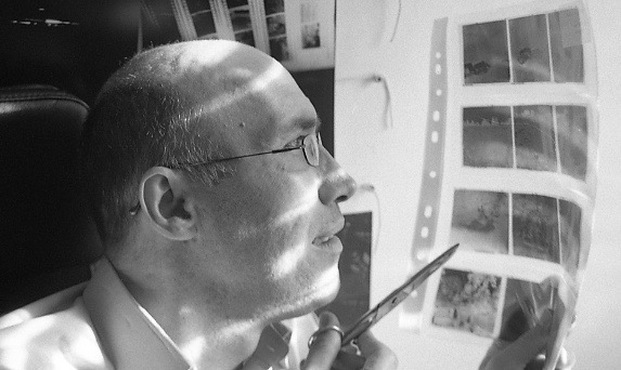
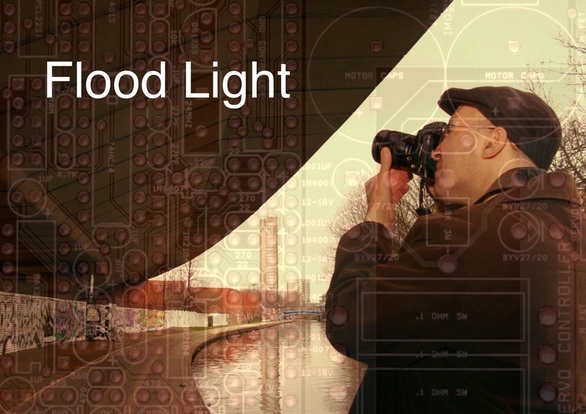
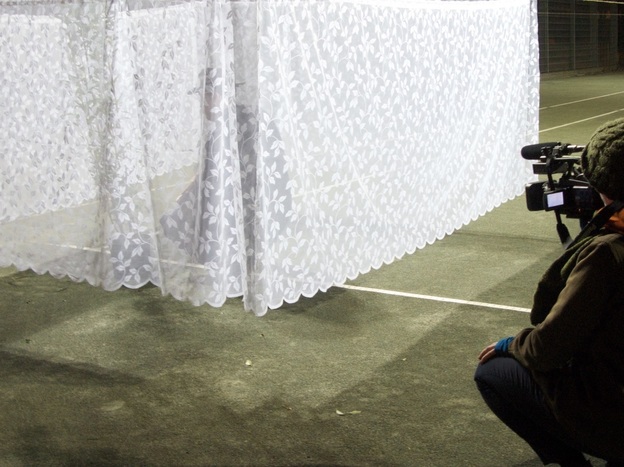
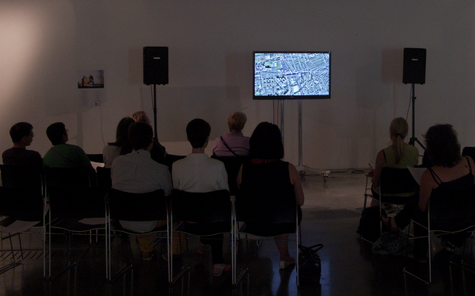
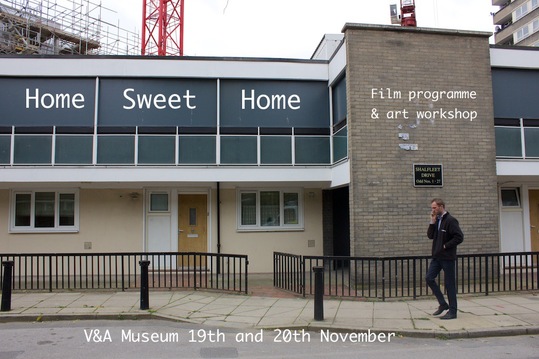
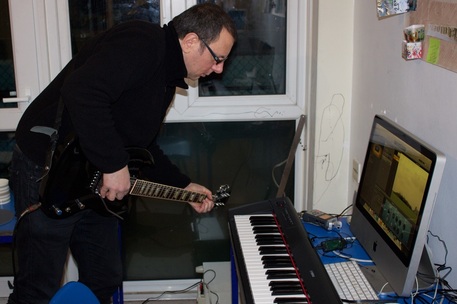
 RSS Feed
RSS Feed
